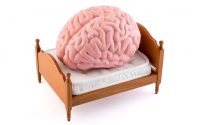Why does bass make you want to dance?

Music is almost universal. Every society on earth has music blended into its culture, and music, inevitably, brings dance.
But why are we so driven to move our limbs, heads, and bodies to rhythmic sounds?
A facet of music that often goes hand in hand with dancing is the heavy use of bass.
Be it the beat of a drum or the pulsing sound from a subwoofer, the bass is often a driving factor in our desire to move in time with the music.
A new study set out to investigate music and the brain, and although it does not fully answer the questions above, it does give new insight into music and the human experience.
The results were published this week in the journal PNAS.

The tone of the rhythm
The scientists — from Western Sydney University’s MARCS Institute in Australia — were particularly interested in the way that our brains process low-frequency sounds.
These sounds are thought to be important in the urge to dance because, as the authors explain, “bass instruments are conventionally used as a rhythmic foundation, whereas high-pitched instruments carry the melodic content.”
The scientists played each participant rhythmic patterns, in either a high- or low-pitched tone, and recorded the electrical activity of the person’s brain using electroencephalography (EEG). They found that brain activity became synchronized with the frequency of the beat.
“There is mounting evidence supporting the hypothesis that selective synchronization of large pools of neurons of the brain to the beat frequency may support perception and movement to the musical beat.”
Study co-author Dr. Sylvie Nozaradan
In the current study, however, they found that bass-heavy music was more successful at locking the brain into the rhythm. The lower frequencies, it seems, strong-arm the brain into synchronizing.
This helps explain why a bass-heavy sound might make people more inclined to move along: the lower frequencies, as the authors write, boost “selective neural locking to the beat.”

The scientists repeated their experiment using different volumes to make sure that the bass effect was not due to perceived loudness. They also confirmed that the increased synchronization was not because of increased activity in the cochlea, the part of the inner ear that receives sound information in the form of vibrations.

How does bass influence the brain?
The authors theorize that the synchronizing effect that bass has on the brain could be due to “a greater recruitment of brain structures involved in movement planning and control,” such as the cerebellum and basal ganglia.
These findings provide a sliver of insight into music and the human need to dance along, but there are also potential medical applications. Using the brain’s natural ability to lock on to a rhythm may help treat a range of conditions. Study co-author Dr. Peter Keller explains.
“Music,” he says, “is increasingly being used in clinical rehabilitation of cognitive and motor disorders caused by brain damage and these findings, and a better understanding of the relationship between music and movement could help develop such treatments.”
There is still much to learn about the ability of the brain to sync up with music. For instance, as Dr. Nozaradan explains, “Future research is needed to clarify what networks of brain areas are responsible for this synchronization to the beat and how it develops from early in infancy.”
It is pleasing to know that when the bass kicks in and you find yourself furiously tapping your foot, it might be because the low frequencies have encouraged your brain activity to sync up with the music. If nothing else, that is a fascinating thought.
Source: Read Full Article


